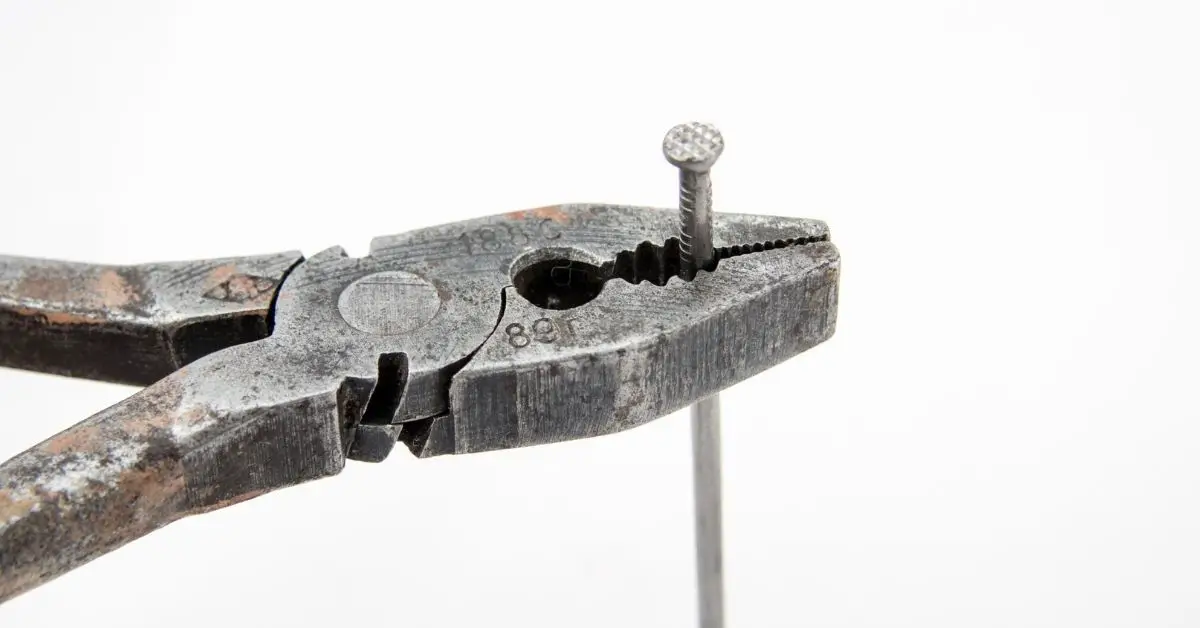Share

It’s possible that you are wondering what tools to use for this process and how to remove nails without damaging the wood. Well, today we will discuss 6 easy ways on how to remove nails without damaging wood!
Nails can make a beautiful piece of furniture look ugly. Whether it is your coffee table, the back of your television stand, or even the front door to your home, nails can be seen everywhere if you do not take care of their removal.
How to Remove Nails Without Damaging Wood
Way 1: Pulling Nails Using a Claw Hammer
Using the claw end of a hammer, grab the head of the nail and gently pull it out. This is one way to remove nails without damaging wood by using another piece of metal to help you do so.
It may take several tries depending upon how deep the wood is embedded, but eventually, you should be able to grasp enough leverage on them with your fingers/tool and yank them out.
If there isn’t much room between where they went into and what’s behind it (i.e., thin plywood), this could damage that surface, which would defeat our purpose here for removing nails without damaging the wood. That said if all else fails just go ahead and pry away!
Way 2: Pry the Nail Out With a Flathead Screwdriver and Hammer
This is another way to remove nails without damaging the wood. Place the screwdriver blade flat on top of the nail so that it’s perpendicular to where the nail entered the wood. Holding the hammer in your other hand, strike the end of the screwdriver with enough force to drive it into the wood.
Doing this will help pry or wedge-open the space around the nail shank making it easier to grab hold of and pull out. Again, depending upon how deeply embedded they are you may need to do this multiple times before finally removing them; just be careful not to damage surrounding surfaces while doing so.
Way 3: Use a Pliers
Yet another way to remove nails without damaging wood is by using a pair of pliers. Grip the nail as close to the surface of the wood as possible and then pull it straight out. If it doesn’t budge at first, try wiggling or twisting the pliers slightly until you get a good grip on it and can finally pull it out.
Way 4: Drill a Hole in the Head of the Nail
This method might be considered more along the lines of how to remove nails with minimal damage to surrounding surfaces instead of not damaging them at all, but it can still come in handy if done correctly. Get yourself a drill bit that’s just slightly smaller than the diameter of your nail.
Drill into the head of the nail until it goes through. You can then use a pair of pliers to extract the nail from the wood. This is especially helpful when trying to remove nails that have been driven into harder materials such as brick or stone since drilling them out will help prevent damage done by chiseling.
Way 5: Use WD-40
WD-40 has many uses. Using some type of lubricating oil like WD-40 may also aid in removing nails without damaging the wood. Have your drill bit ready (or if you’re using another tool make sure its blade is inserted) and spray the head of the nail with enough lube so that it seeps down around where they enter/stuck up above whatever surface they are embedded within.
Using either an electric drill or manual screwdriver, start turning the bit/blade in a counterclockwise motion. Continue doing this for a minute or two and then try to remove the nail. If it’s still stuck, repeat the process but increase how long you apply pressure.
Way 6: Use Your Belt Sander
Finally, another way to remove nails without damaging wood is by using your belt sander. Place it on top of where you want to extract them and run it over their heads until they are flush with whatever surface they’re stuck in .
This should make for an easy extraction once that’s done or else at least minimize any damage if this doesn’t work. Just be careful when doing so because both the head and shank can cause some pretty serious injuries depending upon how fast/hard you’re running the tool!
So keep your fingers out of its path just in case something goes wrong. You may also want to wear safety goggles to protect your eyes.
Removing nails without damaging the surrounding wood can be tricky, but hopefully one (or more) will work for you with these six methods. Remember that whatever technique you use, it’s important to be patient and go slowly to not create any further damage in the process. Good luck!
Suggested Post
- How to Remove Embedded Nails from Wood: 8 Easy Methods
- How to Transport Drywall Without a Truck: 6 Simple Ways



0 Comments